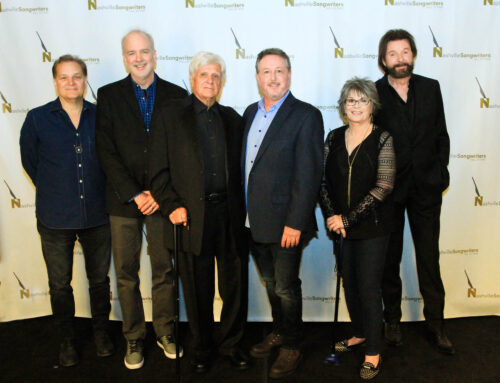Imagine that you have a wireless network router in your home which you set up yourself. Also imagine that, because you are not comput er saavy, you failed to establish a password for that router, or established a “weak” password consisting of only numbers, or your birthdate, or something of that nature. Consider now the proximity of homes, roads or pathways within around 100 feet of your home. How many people would have access to your unsecured wireless network? Your wireless router has an IP Address. Regardless of the the number of nodes using that IP Address, it appears the same to others in cyberspace. It does not matter if it your own computer or someone else with a laptop that has jumped onto your wireless network. Now, using the precedent established in the decision against Jammie Thomas, you could be liable for any copyright infringement committed by a scavenger utilizing your wireless network. Does that seem fair?
er saavy, you failed to establish a password for that router, or established a “weak” password consisting of only numbers, or your birthdate, or something of that nature. Consider now the proximity of homes, roads or pathways within around 100 feet of your home. How many people would have access to your unsecured wireless network? Your wireless router has an IP Address. Regardless of the the number of nodes using that IP Address, it appears the same to others in cyberspace. It does not matter if it your own computer or someone else with a laptop that has jumped onto your wireless network. Now, using the precedent established in the decision against Jammie Thomas, you could be liable for any copyright infringement committed by a scavenger utilizing your wireless network. Does that seem fair?
Something like this scenario is what Jammie Thomas still maintains happened to her. The latest news in this case is that she is appealing the $222,000 verdict against her. She still claims that her computer was spoofed, which generally refers to various techniques of using falsified data to obtain entree, services and/or goods using a “middle man” to obscure identification.
In order to appeal to the 8th U.S. Circuit Court of Appeals, the court with jurisdiction in this matter, Thomas must establish some clear error in the district court’s finding of facts. See Glover v. McDonnell Douglas Corp., 150 F.3d 908, 910 (8th Cir. 1998). On the other hand, the RIAA can defeat the argument by showing that any trial errors committed were harmless and had very little effect on the jury’s verdict See United States v. McCrady , 774 F.2d 868, 874 (8th Cir. 1985)
In this instance, Thomas’ primary argument will undoubtedly be that Jury Instruction No. 15 was not a correct statement of the law with regard to the Copyright Act, that the judge erred in submitting it to the jury, that the instruction significantly impacted the jury’s decision, and therefore there is reversible error in the instruction as provided. Jury Instruction 15 read as follows:
The act of making copyrighted sound recordings available for electronic distribution on a peer-to-peer network, without license from the copyright owners, violates the copyright owners’ exclusive right of distribution, regardless of whether actual distribution has been shown.
Thomas argues that this instruction made it too easy for the jurors to find liability if they found she made her Kazaa shared file folder available to others, regardless of whether anyone downloadied any of the music from the public folder.
For it’s part, the RIAA has argued this theory successfully in several cases prior to this one, including, for example, Electra v. Barker. The essence of the argument is that Section 106(3) of the Copyright Act gives the copyright owner the exclusive right to distribute copies of its work to the public and, while “distribute” is not defined, it is the equivalent of “publish” which is defined in the Copyright Act as follows: “the offerring to distribute copies or phonorecords to a group of persons for the purpose of further distribution . . . constitutes publication.” It is not an unsolid argument.
The question quickly becomes whether it is necessary that a tangible copy actually be distributed, or whether simply creating the possibility of that distribution is sufficient. One of the grandfathers of copyright law, Nimmer on Copyright, states that the “sine qua non of publication should be the acquisition by members of the public of a possessory interest in tangible copies of the work in question.” This seems to suggest a conclusion to the contrary.
That definition, in fact, seems to suggest that a tangible copy of the work must be acquired before publication can occur. A new line of cases, however, are interpreting this section differently when it is applied to making digital copies available for download on the Internet, including two U.S> Circuit Court cases, one in the 4th Circuit and one in the 9th Circuit.
The most apropros of these two is A & M v. Napster, 239 F.3d 1004 (9th Cir. 2001), which found that “Napster userse who upload file names to the search index for others to copy violate plaintiffs’ distribution rights.” Id. at 104.
Perhaps even more supportive of the “making available” theory is the international WIPO treaties to which the United States is a siganatory. Article 6 of the WIPO Copyright Treaty states that the “authors of literary and artistic works shall enjoy the exclusive right of authorizing the making available to the public of the original and copies of their works through sale or other transfer of ownership. Article 8 is even more specific, stating that “authors of literary and artistic works shall enjoy the exclusive rights of authorizing any communication to the public of their works, by wire or wireless means, including the making available to the public of their works.”
Finally, the Register of Copyrights, Marybeth Peters, weighed in on the discussion in a letter to Rep. Howard L. Berman dated September 25, 2002. Citing the Napster case, she opined that “making [a work] available for other users of a peer to peer network to download . . . constitutes an infringement of the exclusive distribution right, as well as the reproduction right.”
So, as these citations illustrate, the theorectical concept of “making available” as copyright infringement is not merely the construct of the RIAA lawyers’ imagination, as is concluded by The Recording Industry v. The People in Argument Over “Making Available” in Virgin v. Thomas. While the 9th Circuit case was, indeed, a brainchild of the RIAA, the concept of “making available” has its origns in the international community as reflected in the WIPO treaties.
It seems, therefore, that Thomas’ appeal will not be an easy battle to win. At the very least, the Judge’s decision to include the jury instruction was based on some pretty solid and well argued prior case law and supporting opinions. In order to prevail, Thomas’ attorney will have to convince the Eighth Circuit that merely making the files available does not constitute publication.
One case which might offer some support this theory is the 8th Circuit’s opinion in Nucor Corp. v. Tennessee Forging Steel Service, Inc., 476 F.2d 386. That opinion cites the Nimmer quote above in ruling that distributing brochures and photographs of architecture did not constitute general publication of the detailed plans. This case, however, involves common law copyright and is factually distinquishable from the Thomas fact pattern.
Thomas will also, no doubt, have tremendous support from various third parties, as evidenced by the Electronic Frontier Foundation’s announcement on Monday that they will be filing a friend of the court brief in support of Thomas’ appeal. A friend of the court brief is a procedure whereby an interested third party who are not a party to the litigation can file a document in support of a party’s position.
Wired’s THREAT LEVEL blog reports that one of EFF’s attorneys, Fred von Lohmann, will hinge their arguments, at least in part, on the “tangible” requirement as set forth in Nimmer. “Look into the Copyright Act — it narrowly defines distribution as distribution of a phonorecord or a copy. The definition says it has to be a physical object,” von Lohmann is quoted as saying.
Whether there will be enough to overturn the trial court on appeal is, of course, yet to be seen. I will attempt to keep you posted on the appeal as it develops.





